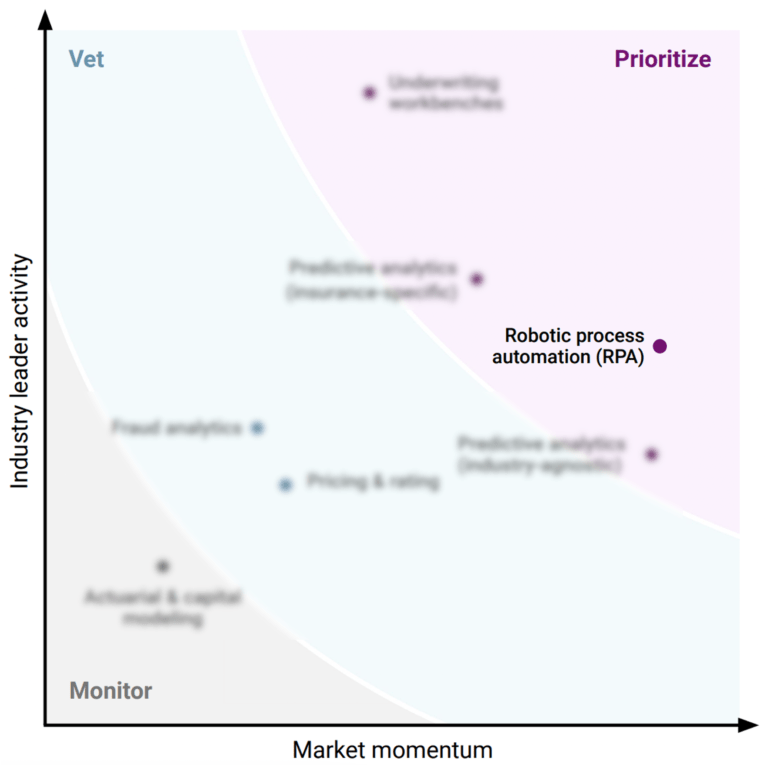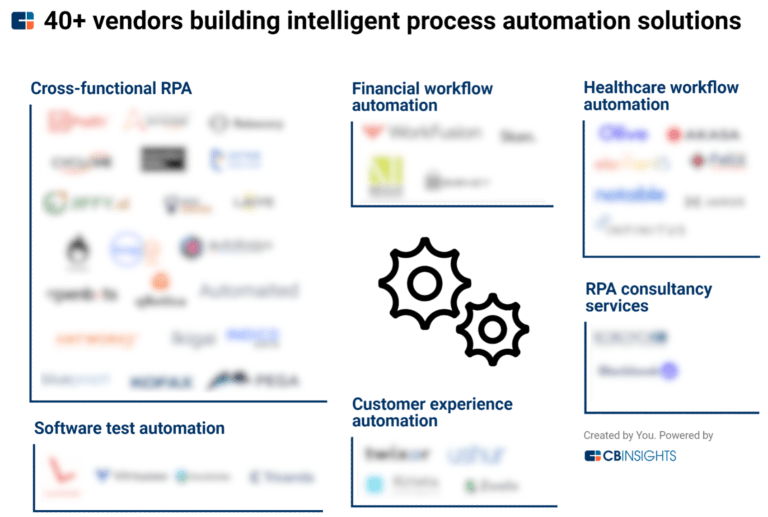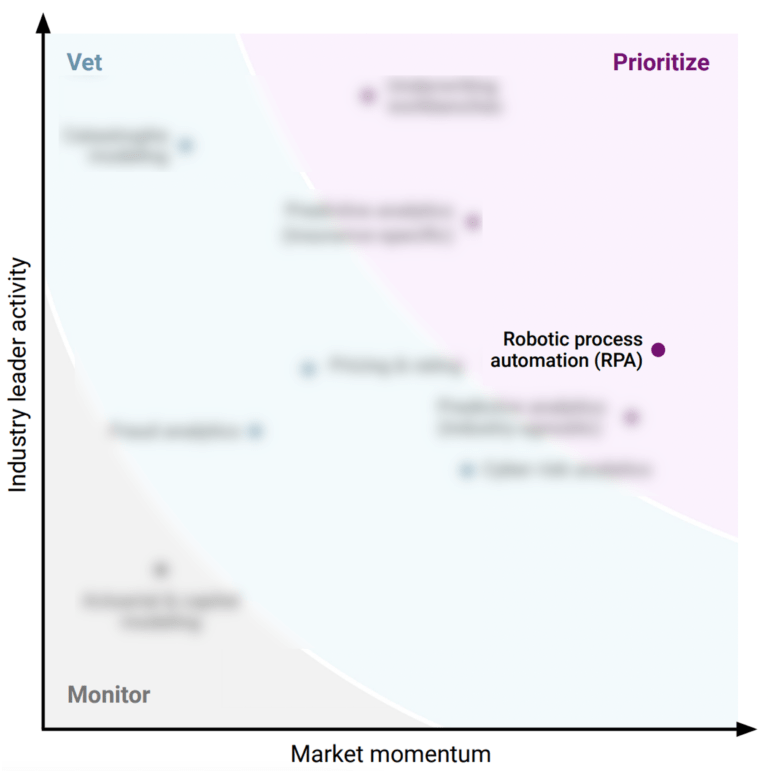
WorkFusion
Founded Year
2010Stage
Option/Warrant | AliveTotal Raised
$339.25MLast Raised
$8.81M | 2 yrs agoMosaic Score The Mosaic Score is an algorithm that measures the overall financial health and market potential of private companies.
-61 points in the past 30 days
About WorkFusion
WorkFusion specializes in AI-driven automation solutions for anti-money laundering (AML) risk mitigation within the financial services industry. The company offers AI Digital Workers that perform tasks such as sanctions screening, transaction monitoring, and customer due diligence to enhance compliance operations and reduce risk. These AI solutions are designed to scale team capacity, improve program efficiency, and support higher-value investigative work. WorkFusion was formerly known as Crowd Computing Systems. It was founded in 2010 and is based in New York, New York.
Loading...
ESPs containing WorkFusion
The ESP matrix leverages data and analyst insight to identify and rank leading companies in a given technology landscape.
The cognitive process automation (CPA) market offers solutions that leverage artificial intelligence and automation to streamline business processes, reduce costs, and improve productivity. These solutions can automate repetitive tasks, extract insights from unstructured data, and provide personalized customer experiences through natural language processing. The market includes vendors offering pl…
WorkFusion named as Leader among 10 other companies, including Automation Anywhere, Blue Prism, and FPT Software.
WorkFusion's Products & Differentiators
Intelligent Automation Platform
The #1 Automation Platform for the Enterprise: Start and scale your automation program with one complete award-winning platform
Loading...
Research containing WorkFusion
Get data-driven expert analysis from the CB Insights Intelligence Unit.
CB Insights Intelligence Analysts have mentioned WorkFusion in 3 CB Insights research briefs, most recently on Sep 21, 2022.

Expert Collections containing WorkFusion
Expert Collections are analyst-curated lists that highlight the companies you need to know in the most important technology spaces.
WorkFusion is included in 8 Expert Collections, including Regtech.
Regtech
1,453 items
Technology that addresses regulatory challenges and facilitates the delivery of compliance requirements. Regulatory technology helps companies and regulators address challenges ranging from compliance (e.g. AML/KYC) automation and improved risk management.
Robotic Process Automation
322 items
RPA refers to the software-enabled automation of data-intensive tasks that are low-skill but highly sensitive operationally, including data entry, transaction processing, and compliance.
AI 100
99 items
Winners of CB Insights' annual AI 100, a list of the 100 most promising AI startups in the world.
Fintech 100
250 items
250 of the most promising private companies applying a mix of software and technology to transform the financial services industry.
Tech IPO Pipeline
282 items
Track and capture company information and workflow.
Fintech
9,304 items
Companies and startups in this collection provide technology to streamline, improve, and transform financial services, products, and operations for individuals and businesses.
WorkFusion Patents
WorkFusion has filed 14 patents.
The 3 most popular patent topics include:
- machine learning
- classification algorithms
- data management

Application Date | Grant Date | Title | Related Topics | Status |
|---|---|---|---|---|
7/30/2021 | 5/14/2024 | Classification algorithms, Statistical classification, Commerce websites, Machine learning, Plant subfamilies | Grant |
Application Date | 7/30/2021 |
|---|---|
Grant Date | 5/14/2024 |
Title | |
Related Topics | Classification algorithms, Statistical classification, Commerce websites, Machine learning, Plant subfamilies |
Status | Grant |
Latest WorkFusion News
Oct 24, 2024
Opinion Artificial IntelligenceGenerative AIHuman Resources Forget what you thought you knew about AI. Meet the future: digital avatars that think, learn and work like humans. Are you ready for the revolution? Credit: iStock Generative artificial intelligence (genAI) is the latest milestone in the “AAA” journey, which began with the automation of the mundane, lead to augmentation — mostly machine-driven but lately also expanding into human augmentation — and has built up to artificial intelligence. Artificial? What if business users started developing alter-ego avatars that performed real business functions? If this is one aspect of the future of AI, what will be the implications for technology leaders? In February 2024, Bjorn Jesch, CIO at German asset management and investment firm DWS , posted a video of his own AI-built avatar providing a glimpse of how he saw the market developing in the near- to mid-term. While avatars are by no means, a new phenomenon — many abound in the esoteric worlds of gaming, sci-fi and film, as well as in learning and education — Jesch’s post is, perhaps, among the first of a senior business executive’s use of a genAI alter-ego for personal and business benefit in the course of daily work. Personal because it made life a tad less stressful for a rushed executive — impossible as it is for someone like him to be in several places at once. And the business benefit, of course, resulted from a timely deliverable. But then, Jesch is no ordinary CIO — he is the ‘chief investment officer’ at DWS, not the same kind of CIO that acronym usually refers to! Since that first experiment, Jesch’s avatar now regularly podcasts without him recording anything; instead, an AI script extracts relevant information from various sources including meeting notes, local files, public sources and data stored in DWS…and then feeds it to the avatar which has now ‘learned the style.’ In the works is a desktop version that could attend virtual meetings. Think of this as a moonshot of certain aspects of genAI that might ultimately lead to digital-human convergence. The implications of this convergence are many and there are already hundreds of instances in business, software, devops, agentic processes and many more sectors with similar stories and use cases. From a CIO’s perspective, there are three key points to note. Beyond the CIO First, no formal request was made to the CIO — the chief information officer — to execute a project, nor were business requirements defined, or even an elaborate budget needed. The business user was able to find the tools necessary to realise an objective without any change, integration or impact on any legacy systems. Second, users were able to seek and procure the tools that could deliver an objective independently. These tools were mostly usable with minimal concern about underlying technology and its longevity, TCO or quality — possibly because the barriers to both entry and exit were deemed insignificant. Third, and most importantly, the AI avatar became an extension of the business user — a human worker who became digitally augmented and increased the productivity of that individual. Effectively, a self-learning, digital twin was born. Even though still in its infancy, with age it will gain the maturity to independently execute many tasks that will be delivered in an increasingly autonomous fashion, while all the time preserving the integrity of, for instance, its owner’s mannerisms, speech and nuanced uniqueness. About two years into the genAI journey and about 20 years in for AAA, 2024 is the year in which the convergence of the digital and human worker is truly beginning. If this is indeed the launch pad, how will multitudes of proliferating business avatars of real individuals — not fabricated talking heads — mature with time? AI digital workers…at scale Aside from the business impacts of cost, efficiency and productivity that are becoming a familiar refrain in any analysis of genAI’s future, its lateral influences are less-common subjects of study. The expectation that some manner of convergence of digital and human staff in most corporate settings will grow exponentially is accepted, even though not all of this relates to digital ‘versions’ of real executives and employees. Enterprise CIOs, CEOs and, indeed, CHROs/chief people officers will be less prepared to deal with the many millions of executive avatars that could be performing on office screens, bringing valuable content, opinions and decisions to bear, driven by the small language models of their human owners. How do we measure, appraise and reward these converged individuals? How will the human capital management (HCM) systems deal with ‘them’? And when the inevitable resignation hits the boardroom table, will their avatars follow suit — or will they leave them behind for the next incumbent to retrain them? And as large sections of creative workforces deploy their digital personalities, intellectual property lawyers will have a field day separating the personal mannerisms that are part of the individual brand from the content that may be a corporate asset. There are some middle-of-the-road scenarios as well: WorkFusion was born in 2010, producing bots that helped automate the excruciatingly mundane of financial processes and was one of the first in what is now a red ocean of automation. But VC-backed and genAI-fuelled in the post-Covid era, WorkFusion progressed into a supplier of context-specific ‘ AI digital workers .’ From transaction screening analysts to due diligence analysts and adverse media screening analysts, WorkFusion today has a growing corporate client base whose employees get augmented as and when needed and for as long as needed, often working with minimal supervision and indefinitely. While these hireable AI digital workers are neither ‘fused’ nor are avatars, their proliferation could raise some questions in a similar strain to that of digital-human fusion. Will genAI alienate CIOs? But by far the biggest consequence — laterally speaking — of the AAA journey is the potential for disintermediation of the CIO and the IT and tech offices in any enterprise. Digital twins are getting built and born in the enterprise without any CIO facilitation. Funding for this is minimal at first and likely to grow — outside of the IT budget. Analyst estimates of IT and tech spend outside of the CIO/CTO budgets range from 40-45 -to 60%. In October 2023, forever fighting in the CIO’s corner, Gartner proclaimed that “45% of CIOs are driving co-ownership of digital leadership.” This is a sweetened narrative of the shift of IT dollars directly to users, business leaders and corporate functions, and it’s a move that genAI will exacerbate. The key prerequisite to make this a robust and sustainable trend is the ability to define an output: If you, as a business user, can succinctly define what output or outcome you need — as in Jesch’s case, represent him verbally and visually for a specific function — genAI can help, with the right prompt engineering, to deliver without elaborate technology pomp and ceremony…at least in the initial phases. In fact, this addresses the chronic inability of business to define desired outputs and outcomes that has kept IT projects from meeting business requirements. GenAI can ‘speak business’ without technical baggage. It is in this ability of genAI to become, in effect, an abstraction layer between the complex pipework and syntax of modern tech and the articulation of a simple business output, that a future of genAI lies. At least in this scenario, the democratization of technology will compel CIOs to attend more to the foundational tasks of redefining data architectures, dealing with the current data center resurgence and the realignment of many more software and hardware stacks to make that abstraction practical. With 2025 IT spend forecast to cross $6 trillion , there is much for both business and technology to plan for. Of course, not all genAI will necessarily touch business users and be in the prompt-and-click genre. Behind-the-screens systemic genAI and AI-to-AI engines, as well as AI that lives in the cloud, will be the lower-level detail that will drive ‘front end AI’ — and which will continue to remain a core technology domain. Many digital twins will replicate machines and processes, and many avatars will remain fabricated to fit a made-up profile of a standalone persona. But it is the augmented human — personified in the contemporary image of a Tumi backpacked manager — that will become the most interesting emblem of the genAI future. Picture this: Software repositories like Github and Stackoverflow have been mature enough for creatives to freely leverage and accelerate their work for many years — a kind of digital backpack for developers. And soon, as genAI-prompted code writes itself to go straight to Jira, Github Copilot’s licenced offering is raising eyebrows , to say nothing of the two years that a class action lawsuit has been in action. The questions these raise require collective enterprise and policy might. How will augmented and non-augmented employees work together? What management strategies will steer diverse digital-human teams? Compensation, incentivization and psychometrics, as well as legal and ethical frameworks, will be the issues to address — starting as soon as 2025! For over 30 years, Bhawani Shankar has worked across industries initially as a deputy CIO, then as an analyst and consultant — including eight years at Gartner — followed by business leadership roles with tier one technology services firms including HCL Tech, Cognizant and Wipro. Since 2022, he has been CEO at Cubix, an advisory firm that helps enterprises select and buy AAA products and services. Related content
WorkFusion Frequently Asked Questions (FAQ)
When was WorkFusion founded?
WorkFusion was founded in 2010.
Where is WorkFusion's headquarters?
WorkFusion's headquarters is located at 1450 Broadway, New York.
What is WorkFusion's latest funding round?
WorkFusion's latest funding round is Option/Warrant.
How much did WorkFusion raise?
WorkFusion raised a total of $339.25M.
Who are the investors of WorkFusion?
Investors of WorkFusion include Georgian, PNC Financial Services Group, NewYork–Presbyterian Hospital, Alpha Intelligence Capital, Guardian Life Insurance Company of America and 11 more.
Who are WorkFusion's competitors?
Competitors of WorkFusion include Redwood Software, Signzy, Altilia, H3M Analytics, Ushur and 7 more.
What products does WorkFusion offer?
WorkFusion's products include Intelligent Automation Platform and 1 more.
Who are WorkFusion's customers?
Customers of WorkFusion include Talanx-HDI.
Loading...
Compare WorkFusion to Competitors

AntWorks is a global leader in the intelligent document processing sector. The company offers a platform, CMR+, that processes a wide range of documents in various formats, including forms, handwritten notes, images, tables, and signatures, to streamline operations and enhance data-driven decision-making. AntWorks primarily serves sectors such as banking, financial services, insurance, manufacturing, retail, and supply chain. It was founded in 2015 and is based in Singapore, Singapore.

JIFFY.ai specializes in AI-driven intelligent automation solutions within the technology sector, focusing on no-code platforms for enterprise digital transformation. The company offers a suite of pre-built HyperApps and tools for end-to-end process automation, designed to enhance operational efficiency and customer experience across various industries. JIFFY.ai primarily serves sectors such as banking, wealth management, media, and corporate finance. JIFFY.ai was formerly known as Option3. It was founded in 2018 and is based in Milpitas, California.

Tungsten Automation specializes in intelligent automation and digital workflow transformation within the technology sector. The company offers artificial intelligence (AI)-powered software solutions that automate data-intensive workflows for various business-critical applications. Tungsten Automation was formerly known as Kofax. It was founded in 1985 and is based in Irvine, California.

Redwood Software specializes in full stack automation for mission-critical business processes within the automation software industry. The company offers a SaaS-based composable automation platform designed to orchestrate, manage, and monitor workflows across various applications, services, or servers, whether in the cloud or on-premise. Redwood Software's solutions are geared towards automating manual tasks in areas such as enterprise workload automation, SAP job scheduling, and record to report processes. It was founded in 1993 and is based in Frisco, Texas.

Nexus FrontierTech develops artificial intelligence and automation in financial services. The company offers modular plug-and-play automation solutions enabling decision-making processes, managing operations, and performance by bringing visibility, traceability, and usability to enterprise data in real time. It primarily serves the financial services industry, government organizations, and other sectors that require efficient development of structured processes for compliance, risk management, and innovation. It was formerly known as Innovatube. It was founded in 2015 and is based in London, United Kingdom.

ABBYY is a company specializing in intelligent automation and document understanding within the technology sector. Its main offerings include intelligent document processing platforms that capture and transform data from various document types and process intelligence solutions that provide insights for business process optimization. ABBYY's products are primarily utilized in industries such as financial services, insurance, transportation, public sector, and healthcare. It was founded in 1989 and is based in Milpitas, California.
Loading...

